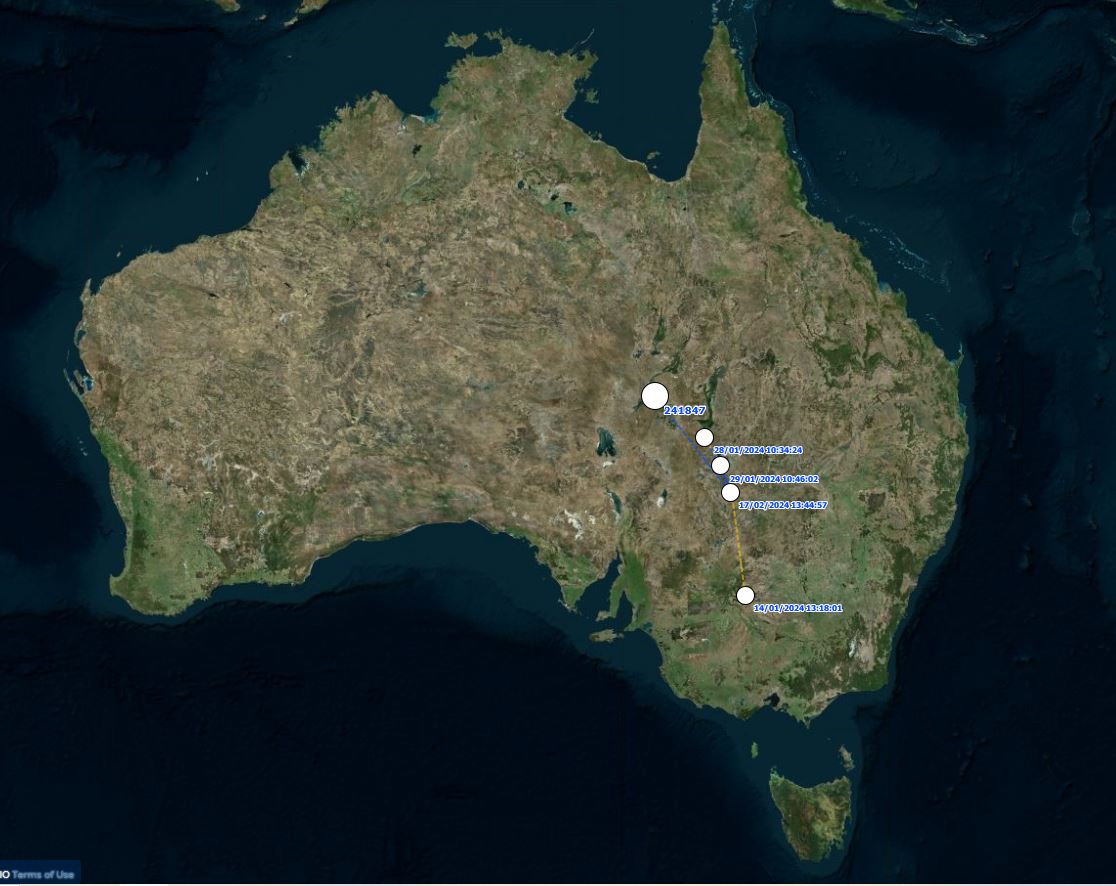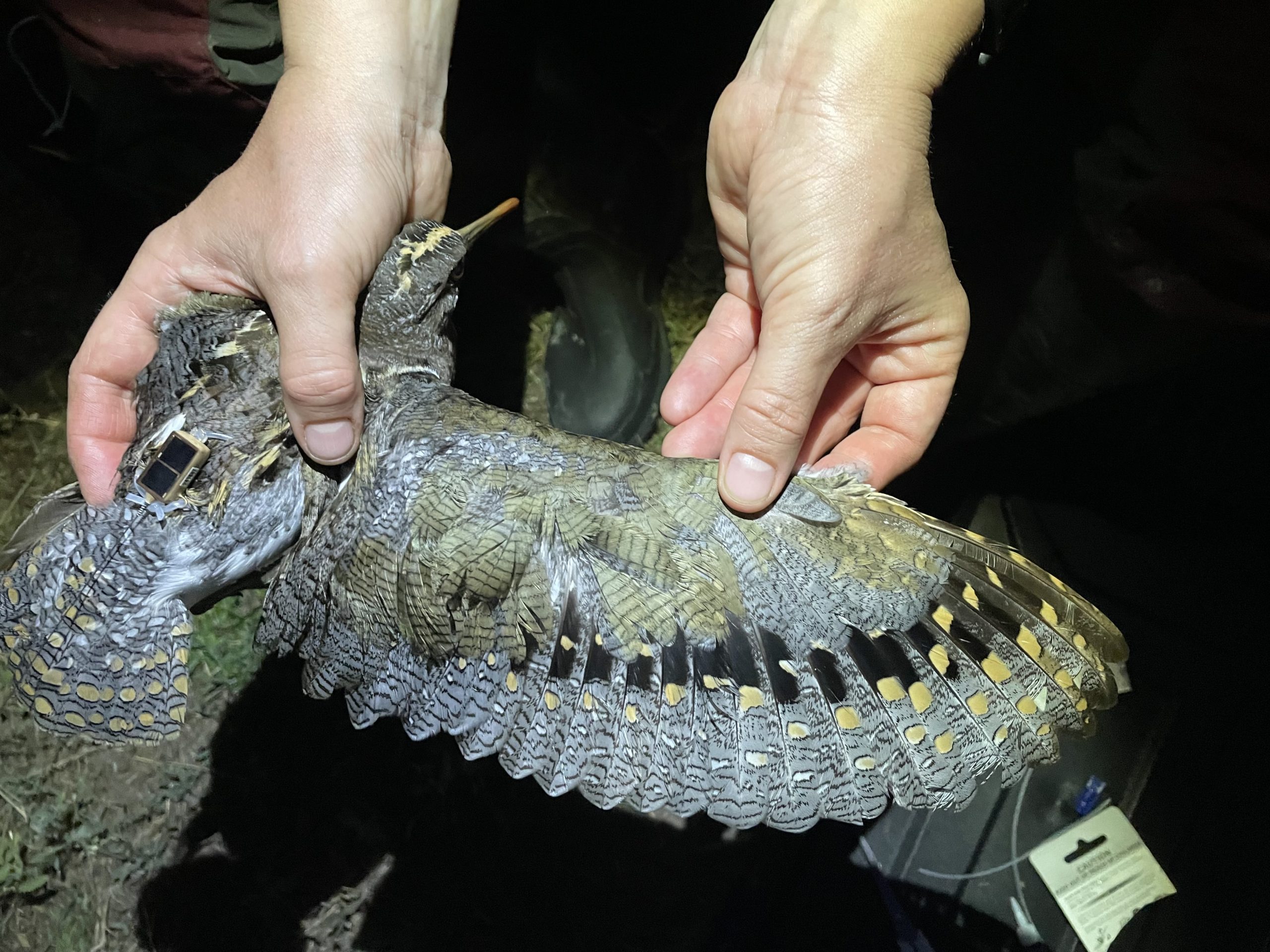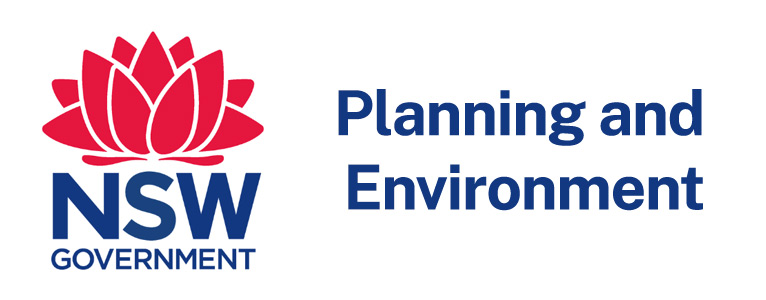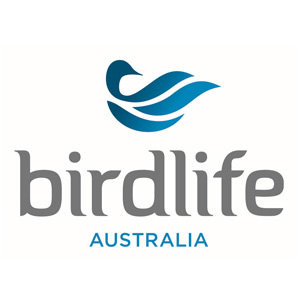
To our immense delight, Marcelina has provided us with the first documented long distance movement ever recorded for an Australian Painted-snipe. She is currently at Goyder Lagoon in the far north-east of South Australia, just south of Birdsville, and almost 1000 kilometres from where we caught her on January 3rd this year.
She was presumably one of the original 25 birds, which included Gloria, that were found by the landholder on his property near Balranald in early October, 2023. She stayed for another week but by January 11th she had arrived about 20 kilometres north on the Geraki Creek near the Pitarpunga Lake. We speculated that a northward journey was afoot and that she might ultimately take us to her wintering site. She stayed there a week and then boom! She flew 500 kilometres to the Yancannia Creek area between White Cliffs and Tibooburra in north-west NSW. It was hard to believe that just two weeks prior she was in our hands near Balranald.
She used several different wetland areas in that region over the next six weeks, crossing from the Murray-Darling Basin to the Lake Eyre Basin, but by late February our intrepid little Marcelina undertook another large movement and arrived at the Warburton Creek in the far north-east of South Australia, about 950 kilometres from the Balranald capture site. From there, she homed in on the Goyder Lagoon on Clifton Hills Station, where she remains at the time of writing. Goyder Lagoon, beside the Birdsville track in SA, is already recognised as an Important Bird Area, home to Grey Grasswren, Yellow Chat and loads of waterbirds, including previous records of APS: http://datazone.birdlife.org/site/factsheet/goyder-lagoon-iba-australia/text We encourage anyone in that region over the coming weeks and months to keep their eyes out for APS and please report any birds found. Some of us think she’ll continue north to the Barkly Tableland or perhaps the Kimberley. Time will tell.
For many years, the lack of APS in south-eastern Australia during the colder months, and a reverse trend in the north, caused us to speculate that some sort of north-south migration took place. For example, a study by Bob Black et al. in 2010 showed that almost all records from central and north Queensland occurred in autumn and winter. And now we have the first hard evidence and detailed movement data showing that such a pattern really exists. It’s terrific. Sure, it’s only one bird and we need to track more but this sort of information helps in so many ways, from population estimates to timing the delivery of environmental water. And it’s all thanks to the 265 generous people and organisations that have made this crowdfunded tracking project possible. Thank you, one and all!
 Marcelina, January 3rd, 2024 near Balranald, now 950 kilometres away at the Goyder Lagoon, SA.
Marcelina, January 3rd, 2024 near Balranald, now 950 kilometres away at the Goyder Lagoon, SA.


